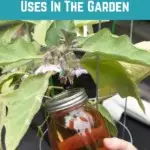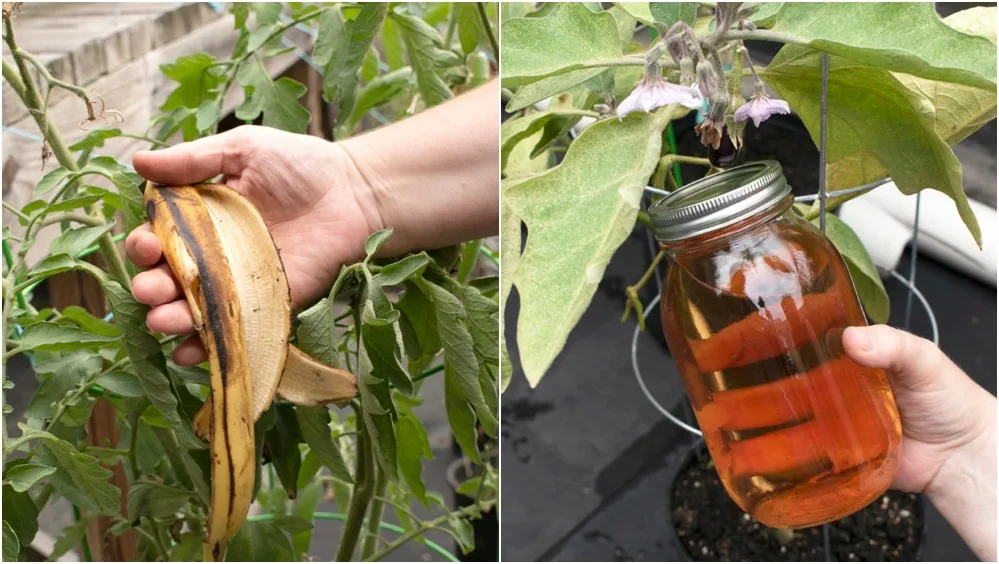
Compost always amazes me.
You take scraps from your kitchen that you’d typically throw away, mix them with microbes and air, and dry scraps from your yard that you’d normally throw away, and BOOM – you’ve made black gold that makes your plants grow like crazy.
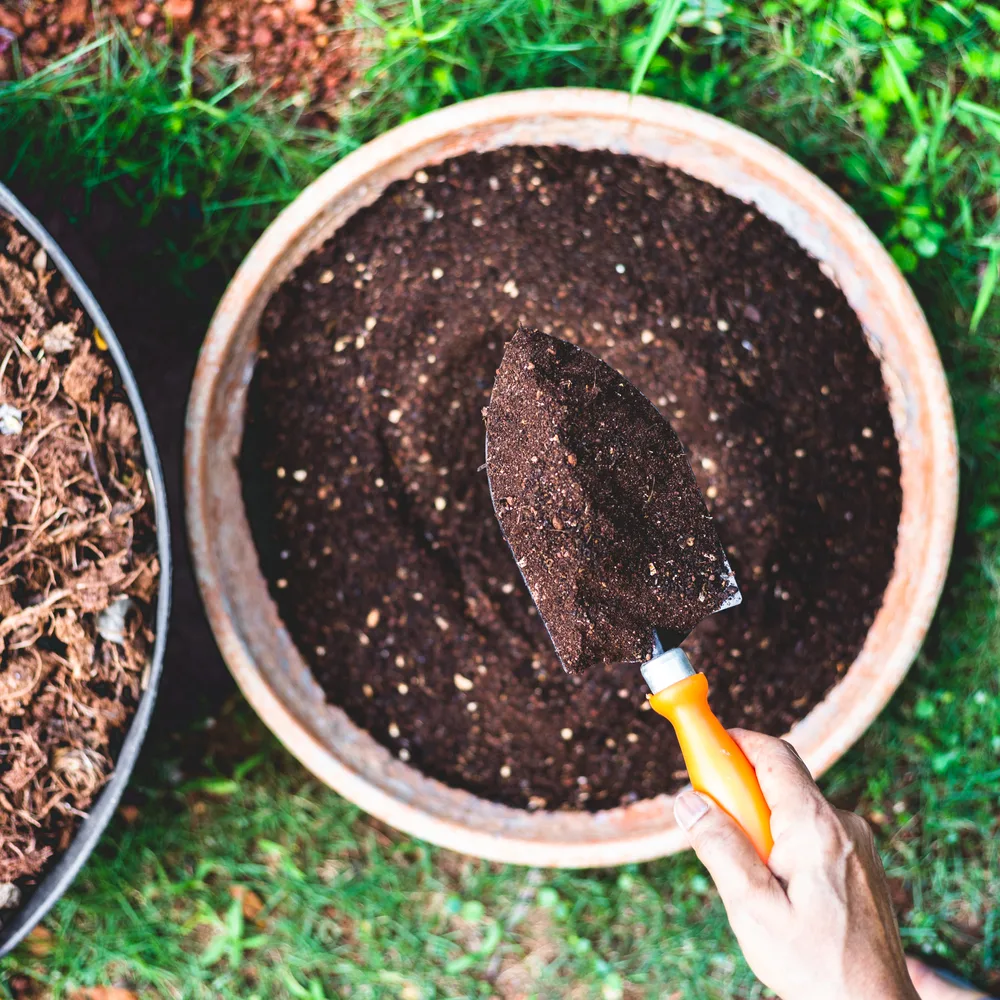
And this is why I’m also amazed by banana peels.
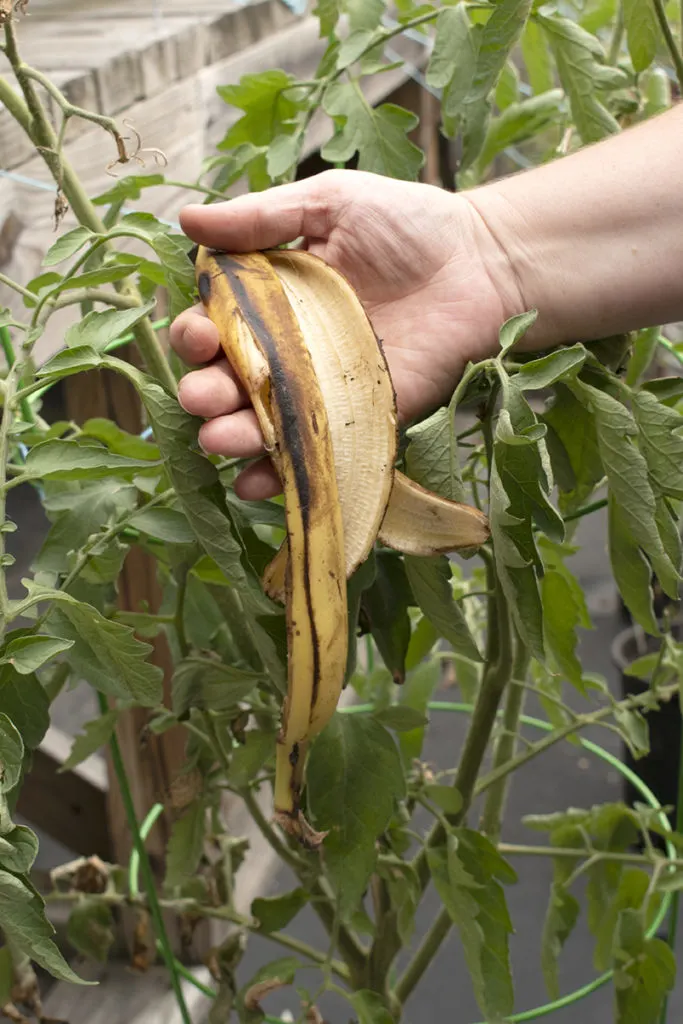
Instead of pitching that peel, I mix it with water and time, and I’ve got banana peel fertilizer. Banana peels are arguably the most useful kitchen scrap you can use in your garden.
It turns out that the most mediocre of drops in Mario Kart, the humble banana peel, is a veritable gardening gold mine.
After reading this article, I hope you’ll never throw away another banana peel.
What’s the deal with banana peel fertilizer?
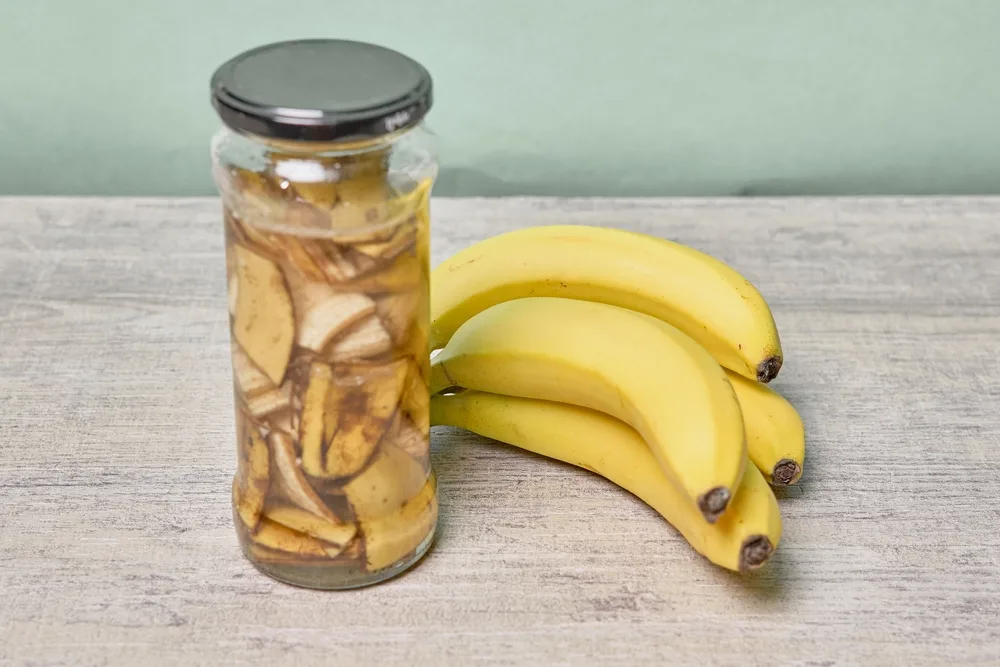
Nearly every gardener knows the macronutrient trifecta – nitrogen, phosphorus, and potassium.
These three nutrients are so essential to plant growth and health. So much so that this is why commercially made fertilizers always have the fertilizer grade on the packaging.
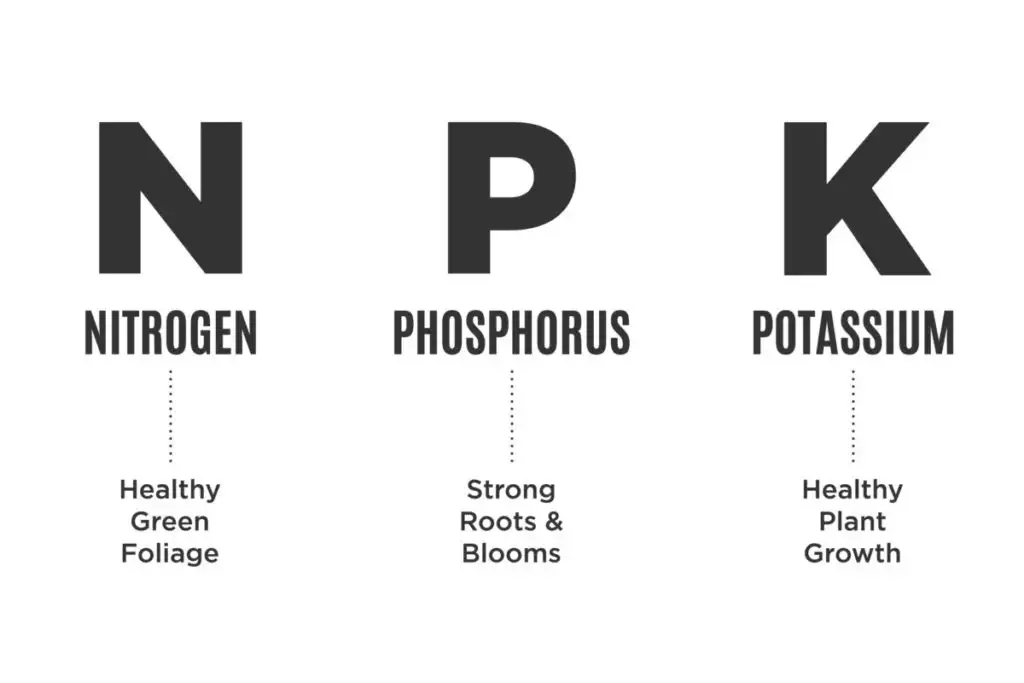
Of course, each plant’s nutrient needs vary, but you’d be surprised how many of them do exceptionally well when fed banana peel fertilizer.
Why? Because banana peels are one of the richest sources of organic potassium out there.
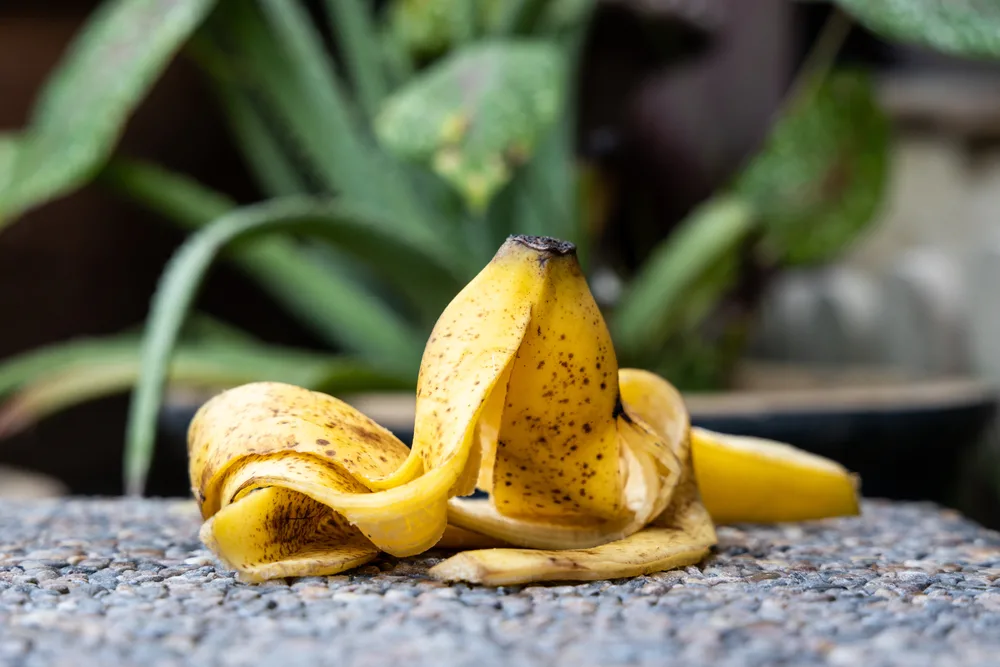
Let’s get technical for a moment.
You always hear about plants needing potassium, but do you know why? Think of potassium as the plant’s supervisor – it assists in nearly every chemical and metabolical process that happens during the life of a plant.
From moving nutrients and water from cell to cell to controlling enzymes, even assisting in when photosynthesis occurs, potassium plays a role in it all.
Bottom line – if you want big, healthy plants with showy blooms or delicious fruit, you need potassium in your fertilizer.
In addition to potassium, banana peels contain some vital nutrients for general plant health – calcium, manganese, sulfur, and magnesium. Each of these nutrients plays a role in maintaining plant health, whether it’s photosynthesis, generating chlorophyll, or regulating the movement of water among cells.
Furthermore, banana peels don’t contain nitrogen, which is important to note if you’re an avid tomato gardener. Banana peel fertilizer is perfect for plants with low-nitrogen requirements such as tomatoes, peppers, cucumbers, and even radishes.
But don’t worry, even nitrogen-loving plants will benefit from the use of banana peel fertilizer. The calcium content found in banana peels helps plants absorb nitrogen in the soil easier.
How to Make Banana Peel Fertilizer
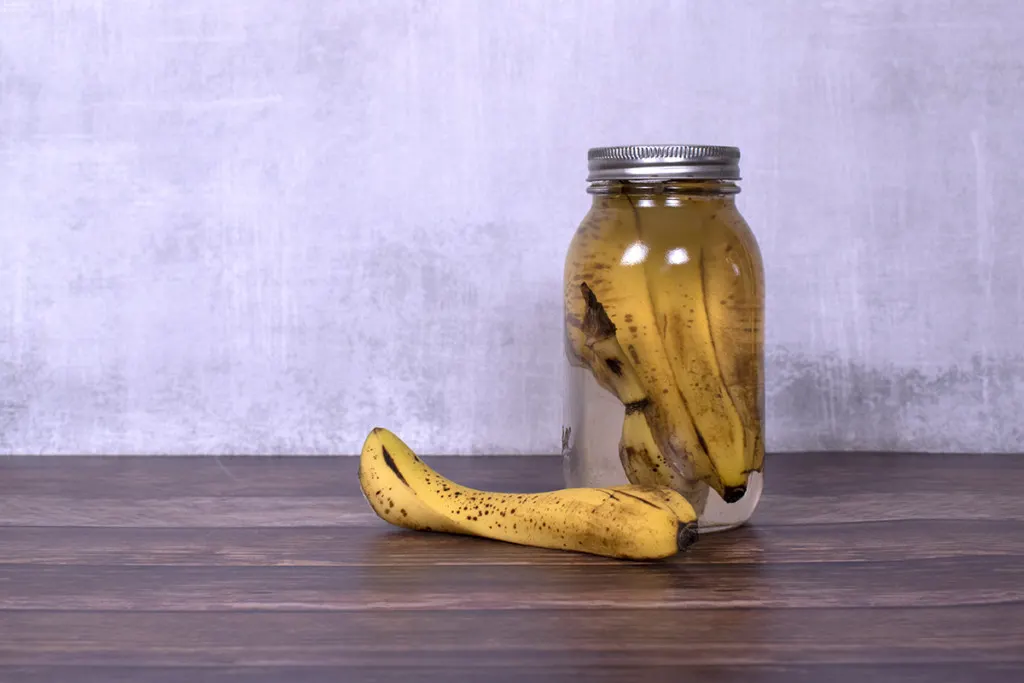
Brewing a batch of banana peel fertilizer is super easy.
Equipment:
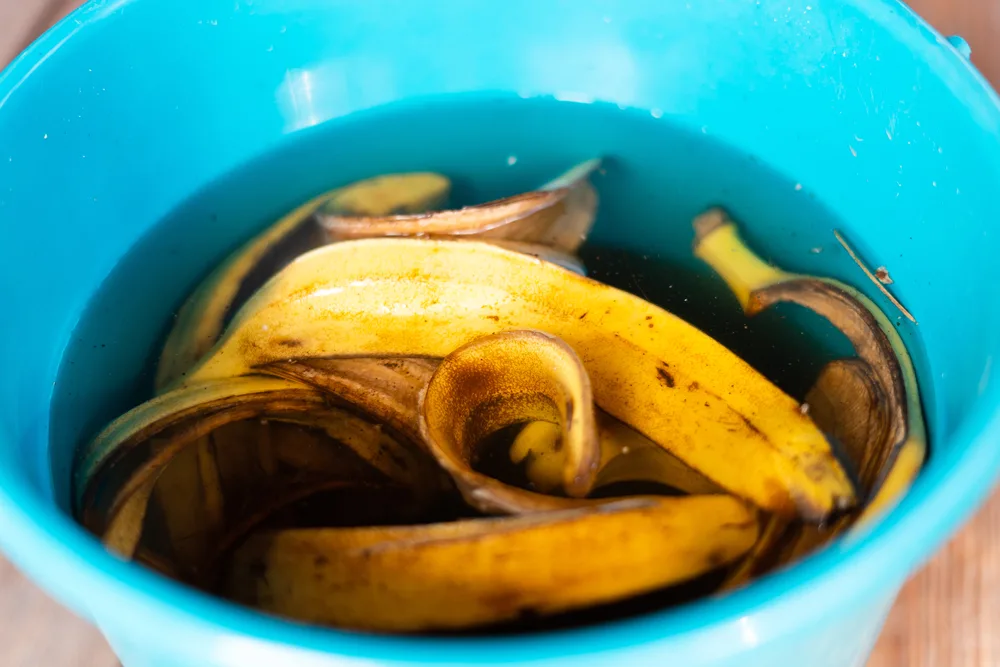
- Banana peels
- One-quart mason jar
- Mason jar lid
- Distilled water
Instructions:
- Add a banana peel to a clean jar.
- Fill the jar with water and put the lid on it.
- Let the concoction sit for a week to two weeks, then remove and discard the banana peel.
- Dilute the finished fertilizer with water in a 1:4 ratio.
- Enjoy happy plants and bigger yields.
Double Up
Of course, you may want to make a large batch to have on hand. This recipe can easily be doubled up for even tripled using a larger container and adding more banana peels.
How to Use Banana Peel Fertilizer
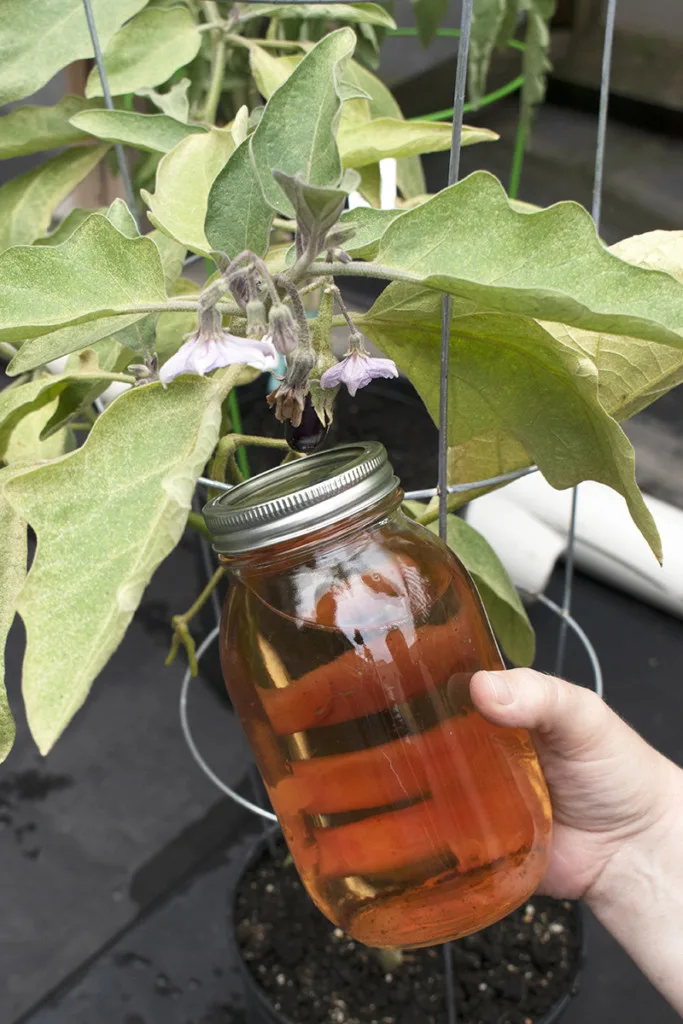
Water your plants at the base with the diluted banana peel fertilizer once a week. It can take a few weeks to see results, so be patient. For the best results, begin the growing season with this fertilizer and use it continually.
I grow my eggplant in containers, so the nutrients in the soil get washed out quickly. Banana peel fertilizer has kept my eggplants happy and productive all season long
You’ll be amazed at how well your plants do with this nourishing fertilizer tea. Tomatoes, summer squash, cucumbers, eggplants, and even roses will all benefit from the use of banana peel fertilizer.
If your tomatoes don’t seem to be doing well this year, here’s 13 common tomato problems, plus how you can fix them.
Potassium Deficiency in the Garden
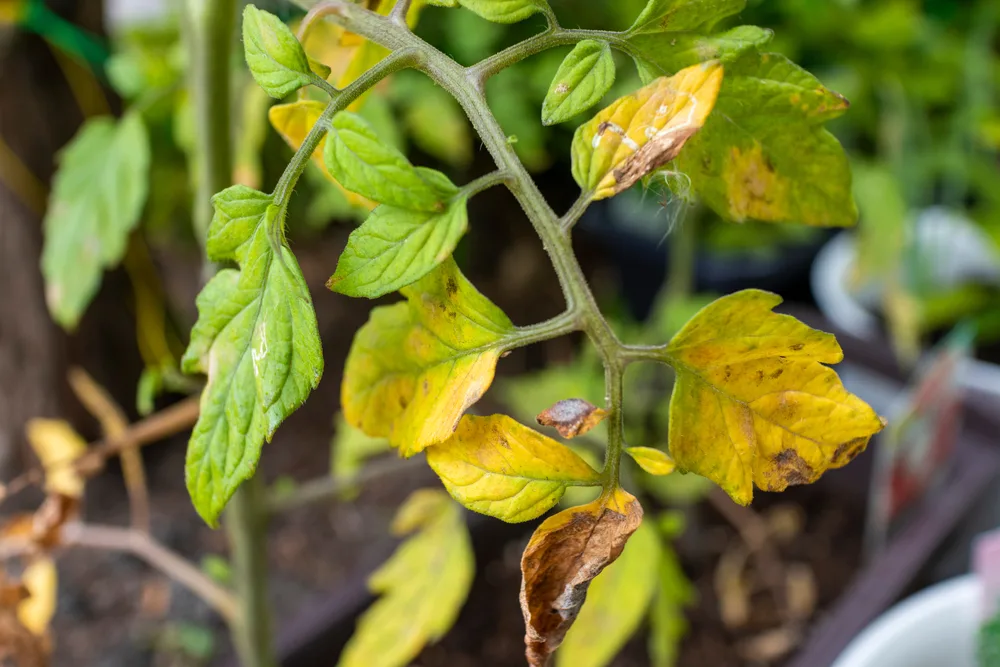
You’ll know your plants need a potassium boost if you look for these telltale signs:
- The first sign of potassium deficiency is easy to spot – leaves on the bottom half of your plant will turn yellow
- Underdeveloped root system
- Your plant’s growth may slow or stop completely
- A plant lacking in potassium won’t bounce back well during a drought
- You may find that the vegetables produced aren’t ripening evenly
More Banana Peel Uses In The Garden
Banana peel fertilizer is excellent, but it’s not the only way you can use banana peels in the garden. Here are some other a-peel-ing ways to put this everyday kitchen scrap to work. (What? I’m a sucker for a good pun.)
1. Bug Buster
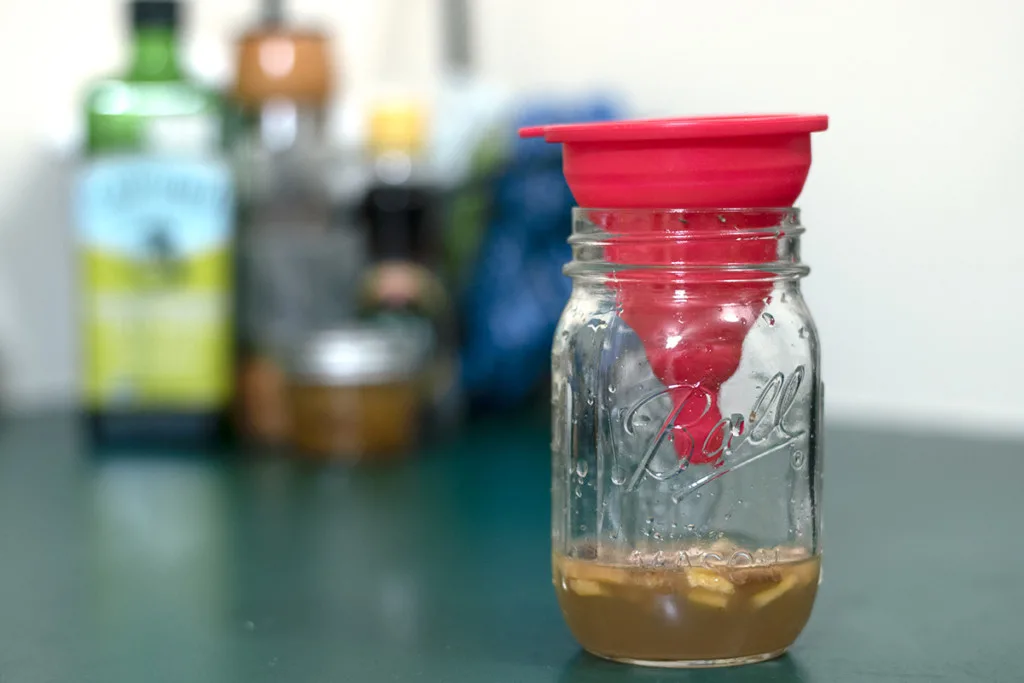
Spray diluted banana peel fertilizer on plants to repel pests such as aphids. Burying chopped up banana peels around the base of plants will also keep aphids at bay.
Banana peels and apple cider vinegar make a fantastic bug trap. Pour a small amount of apple cider vinegar into a jar and add a couple of tablespoons of chopped banana peel. Place a funnel in the container so the bugs can get in but not out. Discard after 48 hours and repeat the process.
2. Plant a Peel
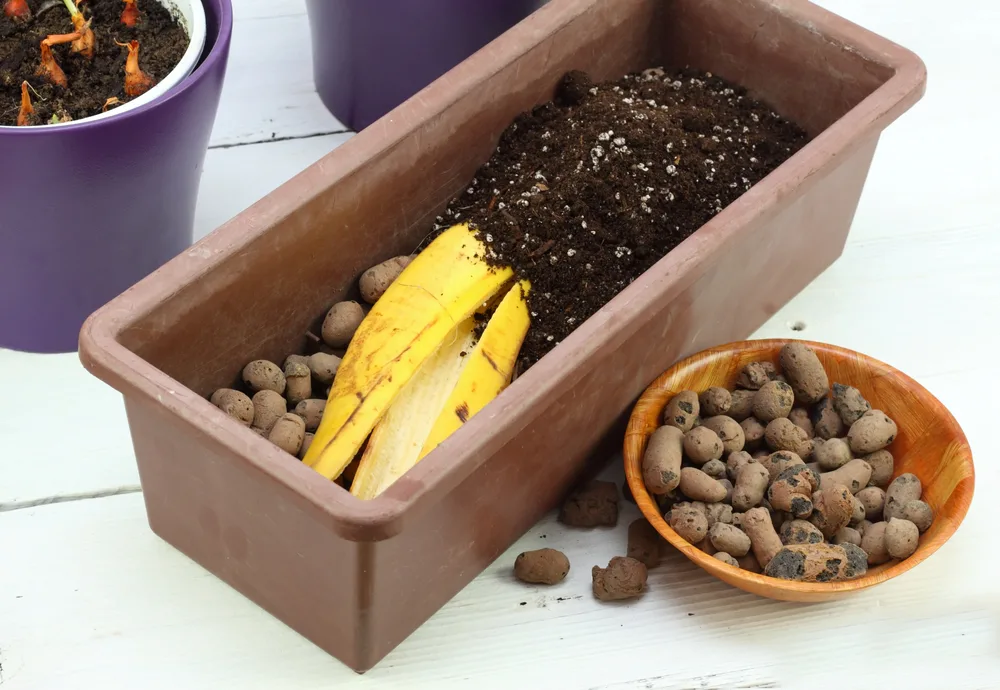
Start the season off right by popping a part of the banana peel directly into the bottom of each hole or container as you transplant your tomatoes and other potassium-loving plants. The peel will break down quickly, giving your plant the nutrients it needs to do well.
3. Give Seeds a Head Start
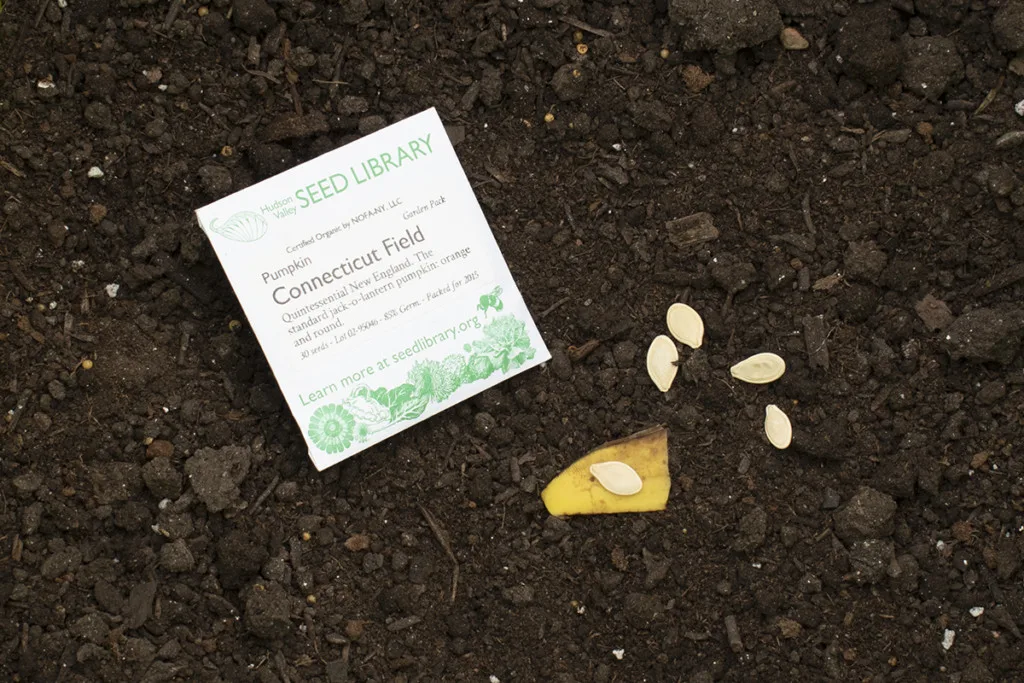
Use banana peels to give seeds an extra boost while germinating. Pop a piece of banana into the hole and drop the seed in on top. Or place the seed directly on a piece of banana peel before covering it with soil. Water and wait.
4. Banana Peel Powder
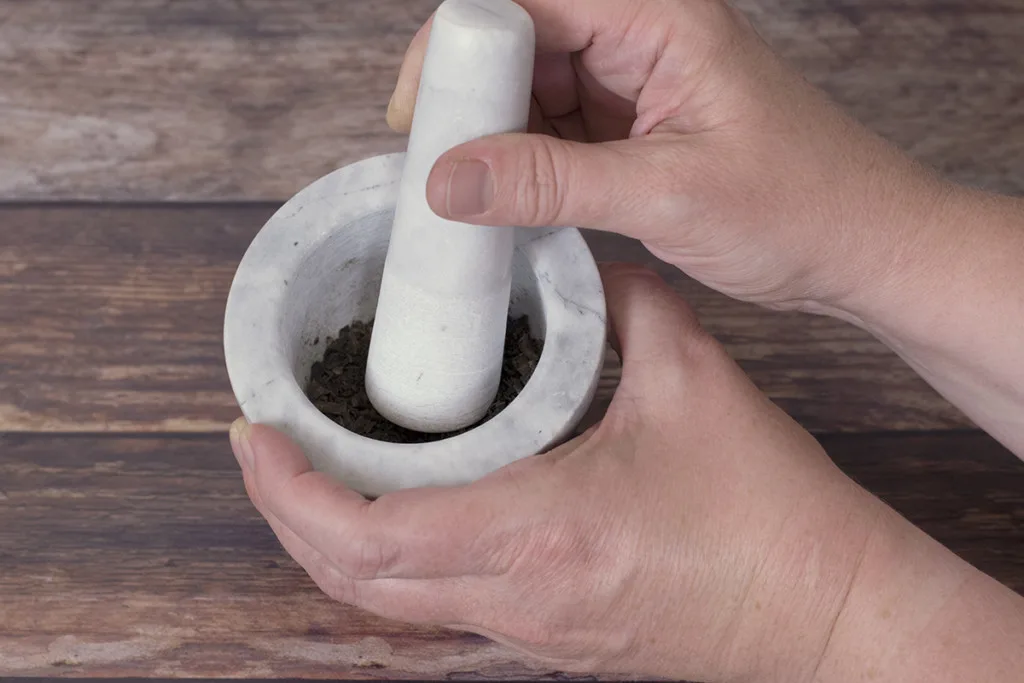
Dry banana peels on the lowest setting in your oven. Place them on a baking sheet so they aren’t touching. I cut mine into 1″ pieces first. They should break apart easily once they’re done.
You can also leave banana peels on a rack to dry in the sun for a few days.
Crush the dried peels into a fine powder using a mortar and pestle or an old coffee grinder. Keep the banana peel container in a sealed jar or baggie.
Loosen the soil around the base of each plant and then sprinkle one or two tablespoons of the powder over the soil. Water the plant thoroughly and let the banana peel work its magic.
5. Chopped Banana Peel Mulch
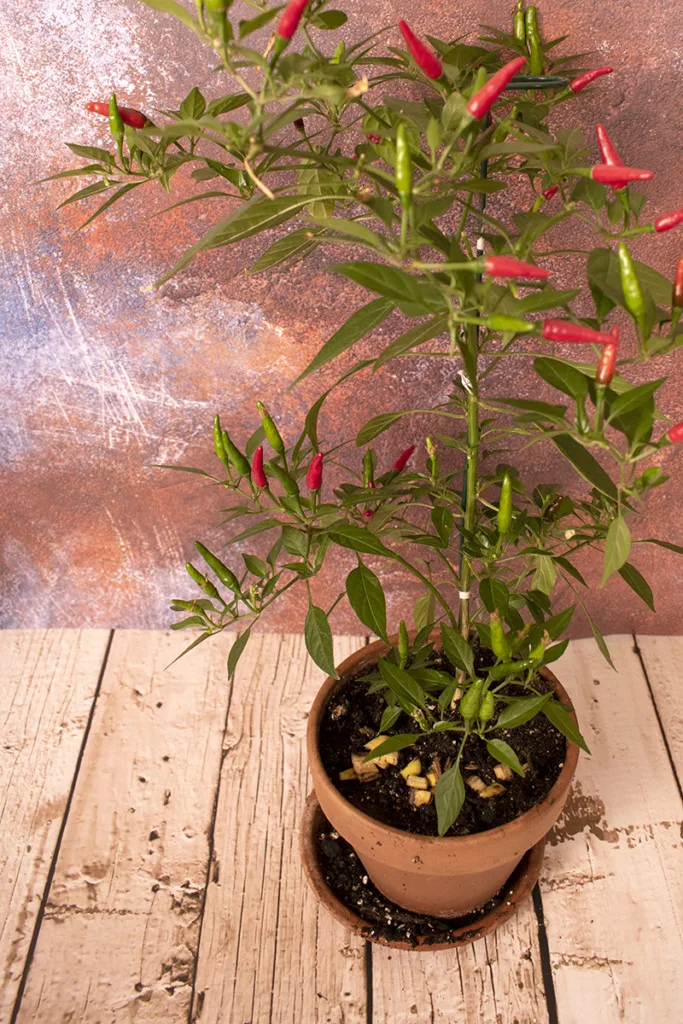
Chop up several banana peels and add a small handful at the base of each of your potassium-loving plants. It doesn’t get much easier than that.
As the peels break down, they will release nutrients in the soil right where they’re needed most.
6. Banana Peel Vinegar for Acid-Loving Plants
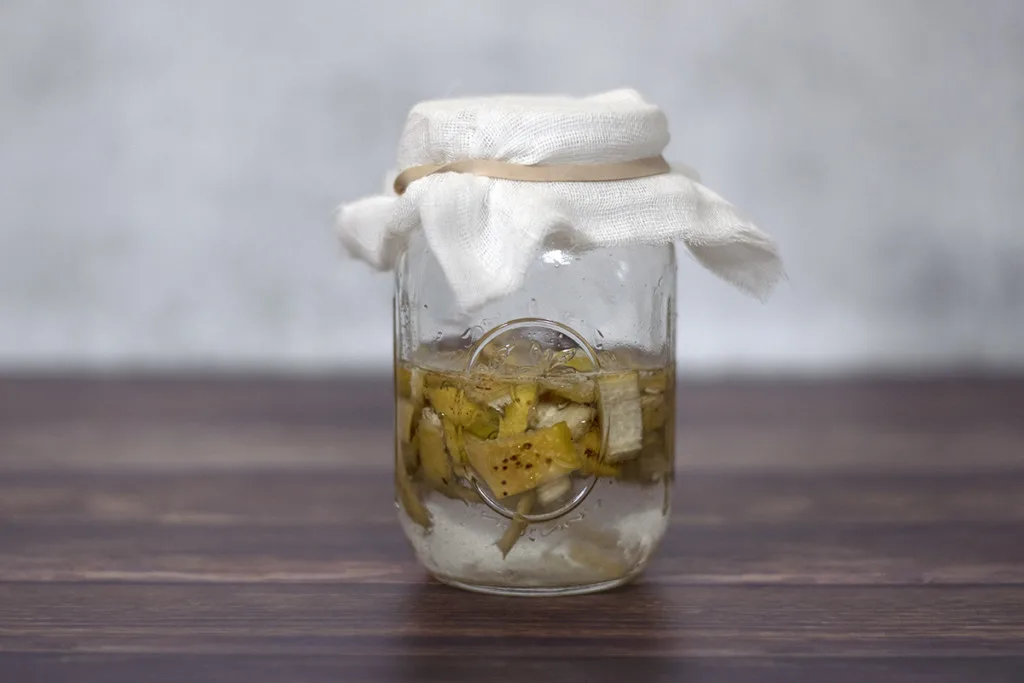
Fermenting the banana peels will result in an acidic vinegar-like mixture. Acid-loving plants like blueberries and hydrangeas will do better with this fertilizer, rather than the standard banana peel fertilizer.
- Finely chop a banana peel and add it to a mason jar.
- Pour in enough water to cover the peels, plus an inch.
- Cover the jar with a doubled-up layer of cheesecloth. Put the jar somewhere warm for a week.
- Remove the peels after a week and recover the jar with the cheesecloth. Let the vinegar continue to ferment for another month.
- Dilute the finished vinegar 1:1 with water and feed to plants that require acidic soil once every other week.
7. Winter Soil Booster
Once the growing season is finished, till or dig under banana peels throughout your garden. The peels will break down during the winter months, replenishing your soil with nutrients.
If you’ve got a large garden, ask the local smoothie place to save their banana peels for a few days for you.
8. Wipe Houseplant Leaves
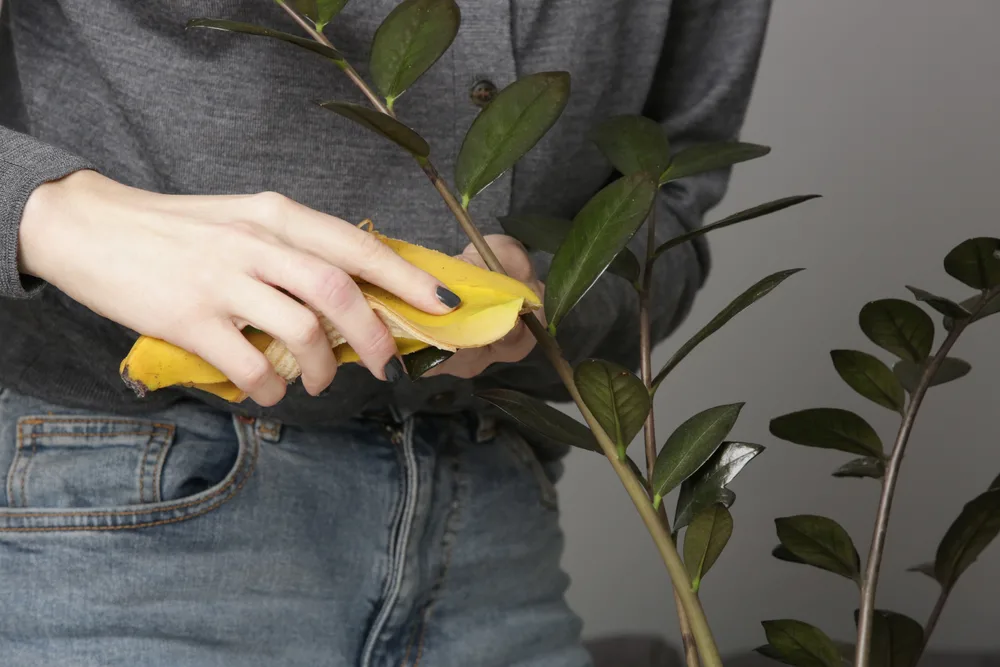
Houseplant leaves can accumulate dust over time which hampers their ability to absorb sunlight and photosynthesize. This can hinder their growth.
Use the inside of a banana peel to gently wipe down your houseplant leaves.
9. If All Else Fails – Compost Them
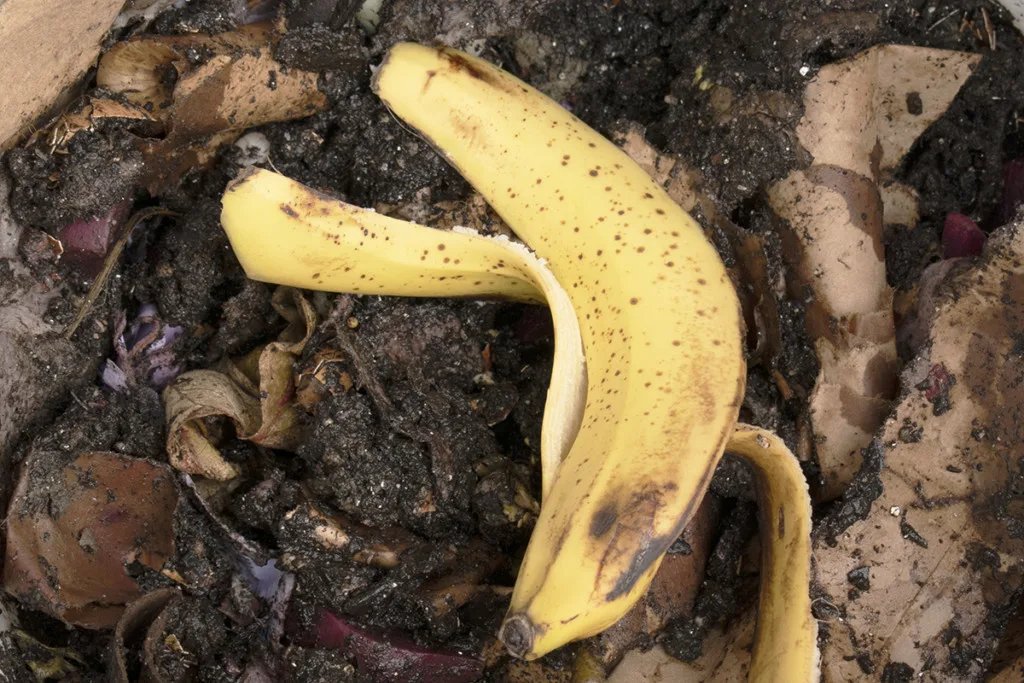
Like most vegetable and fruit scraps, banana peels are great for the compost bin. Banana peels, however, break down quicker than most scraps, making them perfect for the compost bin. If you do nothing else with your banana peels, add them to your compost.
Banana Peel Tips
Depending on where you live, putting banana peels directly on your plants might not be the best idea, as it can draw pests to your garden. It might be a better option to use banana peel fertilizer or banana peel powder.
If you’re not big on eating bananas, check local places that make smoothies and ask them to save their banana peels for you. Or you can also ask at your local supermarket for overripe bananas that they can no longer sell.
Here are 10 other different liquid plant fertilizers you can make at home.

Get the famous Rural Sprout newsletter delivered to your inbox.
Including Sunday musings from our editor, Tracey, as well as “What’s Up Wednesday” our roundup of what’s in season and new article updates and alerts.


